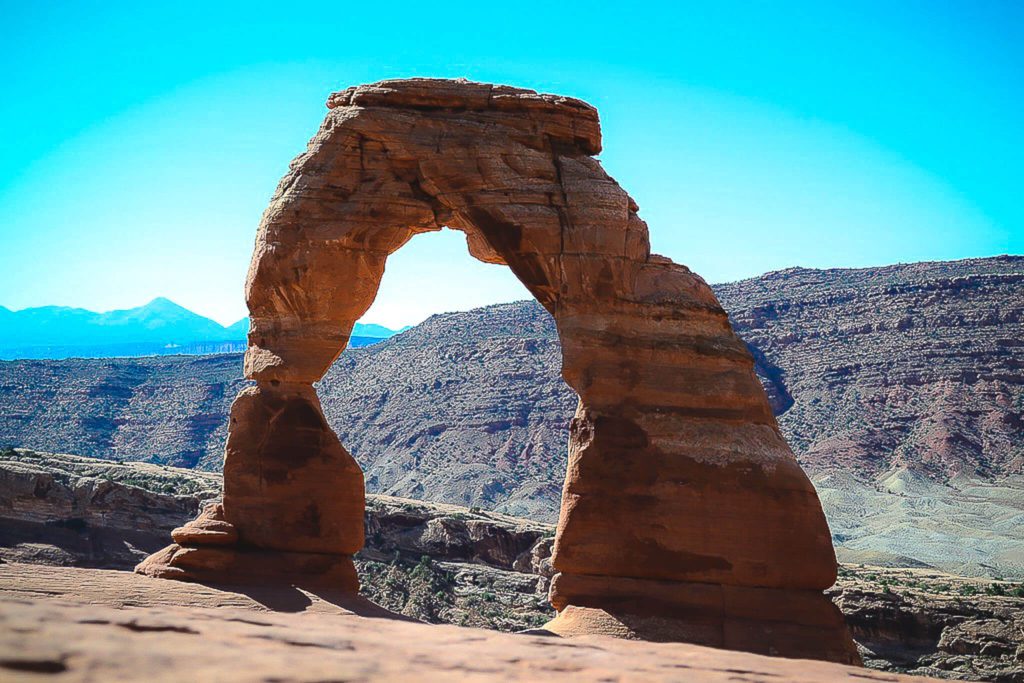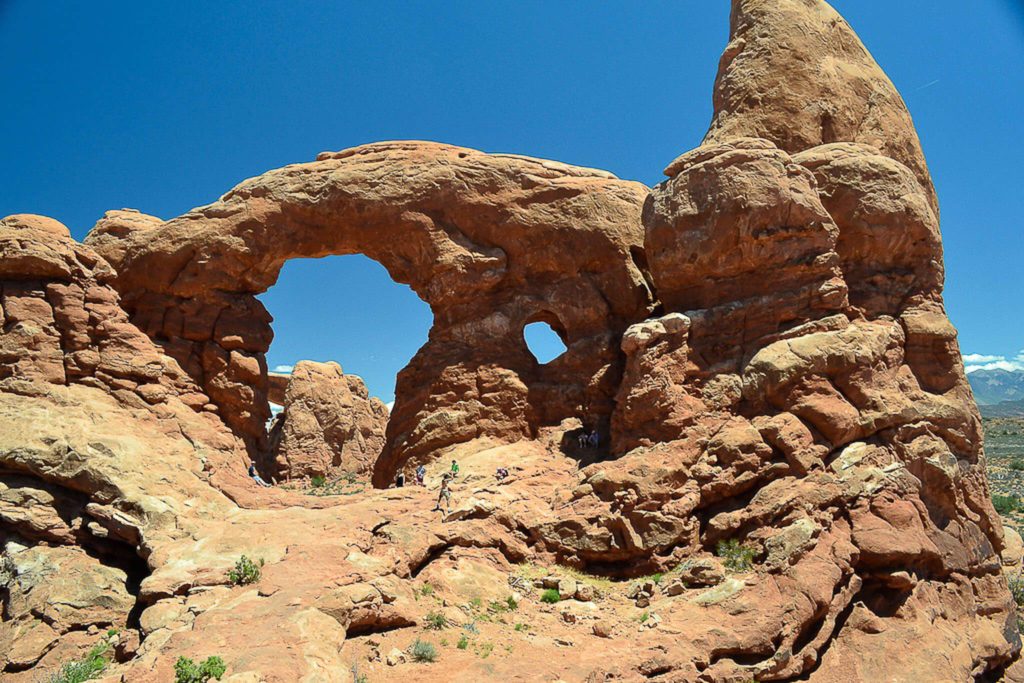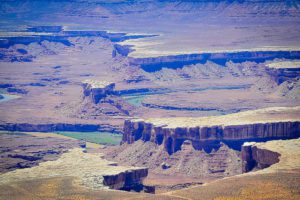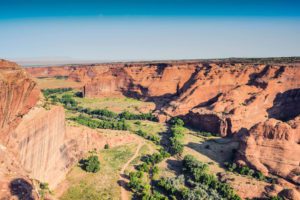Arches National Park is a gem of the Southwest! It is one of our favorite National Parks. So what makes it so amazing? Well there is just something about the gravity defying geological wonders that just leave you in awe of the place. And no matter how many arches you see, you still continue to be amazed. Have we convinced you to go yet? If so, keep reading for our guide to Arches National Park to plan you trip to this land of wonder!
Guide to Arches National ParkToggle Table of ContentToggle

About Arches National Park
Arches National Park is home to more than 2,000 natural geological figures. This is a very popular stop for visitors to the Southwest USA as many of these awe-inspiring formations are easily accessible. This is also the park with the highest concentrations of natural stone arches in the world. So it is a popular destination for rock nerd like Scott. The 40 mile scenic drive in and out of the park, provides a gateway for short hikes to some of the most amazing sandstone arches on the planet.
While Arches National Park is a highly visited park, it is also a very rustic park. It would be remiss of any guide to Arches to fail to mention that the park lacks in amenities that are common in other highly visited parks. There are no food vendors within the park so you’ll have to plan accordingly. Also, there are only two water sources, the visitor center and the Devils Garden area. Make sure you fill up your water containers at both sources. There are toilets at the major trailheads but they are pit toilets so don’t hold out hope for coming across a flush toilet, except in the Devils Garden campground and the visitor center.
Arches is also a very fragile park. The desert soil ecosystem is complex and delicate. Therefore, you should also stay on marked trails and never venture off on your own. While Arches National Park allows you to get up close and personal with almost all of the arches, you cannot climb or touch them. They have been eroded by years of weathering for your personal enjoyment. Don’t overwear them with greasy hands or dirty shoes and ruin them for future National Park goers.

When to Visit
The first thing to decide is how many days will you spend in Arches? We think you can spend one day in Arches National Park and see the best of what the park has to offer. However, if you like to travel at a slower pace, have traveling buddies with shorter legs or just want to spend more time on longer hikes, two days would be best.
So now that you’ve tackled how many days you’ll spend, you’ll need to determine when to visit. Since Arches National Park is in a desert, any travel guide to Arches will recommend that the best times to visit are in the Spring and Fall. At these times of year, temperatures are warm without being unbearable and nights are cool without being frigid.
You can still visit in summer but be prepared to go at a slower pace. When we visited in July, temperatures were constantly above 100F and we had to shorten our hikes accordingly. You could also consider visiting in winter. This would be great temperatures to hike in. However, consider that trails could be icy making hiking more dangerous. Winter also will have shorter days making packing everything in to a short amount of time harder to do. The park is open year round so it’s up to you to determine what the best weather will be for the activities you want to accomplish.

Getting There and Around
You’ll find that Salt Lake City, Utah is the closest major airports. From this airports, you’ll need to rent a car to drive the 3.5 hours south to Arches National Park. While Moab does have a small airport, the prices and availability of flights is limiting. Since Arches is best viewed by car, we think the best value is to drive in to Salt Lake City, rent a car and drive on to Arches.
The nearest town to Arches National Park is Moab, Utah. This is an adventure haven and a great base camp for a Utah adventure.
Try to arrive at the park early in the morning or late in the afternoon. Midday arrivals can encounter traffic jams at the gate of the park. Also, you may run into traffic jams along the scenic drive where drivers are encouraged by the beautiful vistas to drive slowly and rubberneck. PS: The park staff does NOT encourage this behavior.
Cell service isn’t great in the area so make sure to grab a free park map at the Visitor Center to help you if you get lost.
What to Budget
Admittance into Arches National Park is $30 for a vehicle. This lets you come and go for 7 days. If you’re planning on visiting any other parks in the area, like Canyonlands, consider purchasing an American the Beautiful yearly National Parks pass for $80. Utah also sells as Southeast Utah Parks Pass which get you into Arches, Canyonlands and Natural Bridges all for $55.
If you plan on doing the Fiery Furnace hike that is one of the top things to do in Arches you’ll need to have money for a permit or ranger led tour. Cost is up to $16/person.
Food is nonexistent in Arches National Park so you’ll need to pack your own food. There are grocery stores in Moab with reasonable food prices. You really can spend as much or as little as you want on your picnic lunches.
If you plan to eat dinners in Moab, you’ll spend around $15-25/person for a meal out, depending on what type of restaurant you choose.
Depending on where you choose to stay, your prices will vary. Camping in the park is $25/night. Campgrounds in Moab are around $25-45/night depending on campsite type. If you choose to stay in a hotel around Moab, you’ll find a few hotels in the low $100s. However, a majority of hotels will be $180-220/night, which is high for the US, but typical of a tourist area. Property rentals like AirBnBs average $210/night.

What to Pack
You’ll most likely end up doing a lot of hiking when you visit Arches, so plan on packing a good pair of shoes. I love what I call my “hiking sandals” for warm weather hikes like this, sandals with lots of straps to keep them in place. However, there were some hikes that I had to switch to my tennis shoes for at this park as you’re walking over uneven ground frequently. Scott hiked this park in his hiking shoes, which in retrospect was the better choice.
Make sure to pack plenty of water and something to carry it in. We packed a cooler with gallon jugs of water. We then had our hydration backpacks that we added this water to throughout the day. The cooler was a nice touch as it kept our water cooler than water bottles or hydration packs alone. You’ll also need a cooler to pack your snacks and lunch. There are several picnic spots in the park. However, there are no food vendors in the park. If you’re visiting in warm weather, pack yourself a nice salty lunch to help you retain your water.
No guide to Arches National Park would be complete without recommending sunscreen and a hat. Shade is almost nonexistent in the park. So make sure to slop on some sunscreen and slap on a hat to protect yourself from the sun.
One of the best things to do is to see a sunrise or sunset in Arches National Park. If you plan on taking up this activity, make sure to pack a headlamp to hike to and from your viewing site.
Because the temperatures here are very dependent on the sunlight, make sure to pack layers. You can often get cool temperatures in the morning and wildly hot temperature midday.

Safety
Remember, you are in the desert. Dehydration is the top risk to your safety. Pack plenty of water. We carried in one gallon of water for each person and refilled at a campsite. So we drank a total of 2 gallons of water each and still had headaches from dehydration by the end of the day. Be prepared. Take enough water for you into the park as refill stations are only available at Devil’s Garden and the Visitor Center. The park recommends 1 gallon per person, our guide to Arches recommends 2 gallons.
Remember to follow marked trails to avoid getting lost. Sometimes the trails are marked by small rocks on the ground, making them hard to follow. If you aren’t sure where the trail goes, wait for someone to come by and ask them.
Watch where you walk and wear proper shoes as the paths are often uneven. If you’re visiting in the winter, make sure your shoes have proper traction for hiking over ice and frost.
Also, cell service in Arches is most nonexistent. Make sure you stay to marked trails where you’ll see other travelers if you have any problems. If you’re planning on doing more extreme hikes, like the Fiery Furnace, you’ll need to get a permit so rangers will know where to find you if you get lost.



